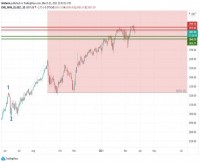|
Building a Strong Client Base in a Changing World Last year's extreme turmoil not only affected investors' views but also managers' perspectives on what they need to do to strengthen their business. In particular, managers want to have diverse investors who do not all rush to the exits at the same time. Globalization is an important aspect of client diversity. The composition of hedge fund investors varies across the world, as an annual survey by Deutsche Bank demonstrates (table below). Top managers recently commented on desirable client characteristics. Thus Daniel Och of Och-Ziff argues that the quality of the investor base is one of the key variables. The best investors can make longer, more sizable commitments, he said at a conference call in August. Blackstone chief Stephen Schwarzman expressed a similar idea. "We're seeing a much more thoughtful group of investors assessing the damage to their portfolios and looking at asset allocation models to see how to repair the damage," he said this August. Here, Michael Callahan, vice president at Millburn Ridgefield Corp., offers insights on developing a diversified group of investors. For more on this topic and Millburn, see the previous section. A diverse client base increases the stability of a money manager's assets and allows for increased investment in research and development. At Millburn, we've been studying and pursuing new possibilities for diversification, focused on building a global investor base. Here are some thoughts on the subject. When you look at various market segments, you notice important differences in investor behavior. There are also variations across geographic areas. Moreover, the 2008 crisis has shown the importance of liquidity and transparency, re-shaping investors' perspectives. Greater interest in commodity trading advisors and macro strategies is one encouraging consequence of that. Add ongoing changes in distribution channels, and you have an evolving market for managed futures. In the past, Millburn had products distributed by broker-dealers in the US. And we're not alone. In the US broker-dealers have been a major conduit for managed futures, whereas institutional investors have not been very active with allocations. The pattern in Europe is different. There you see more of an institutional presence. But the US broker-dealer space is changing and institutions are becoming more active. Our client base is about 60% US and 40% non-US. Overall, our client base is skewed more toward affluent retail investors over institutions. We define the institutional market segment broadly to encompass not just pensions, endowments and foundations, but registered investment advisers, family offices and multi-family offices. The common element, from our perspective, is that in this segment allocations are slow to develop, with a lengthy due diligence process. Although you must meet certain risk- adjusted return parameters, performance is not necessarily the top priority. There is also special concern about risk management, business continuity and enterprise risk. Developing a relationship with an organization - usually with the chief investment officer - takes time but is very much worth the effort. While slow to develop through the due diligence process, these allocations tend to be much stickier, we find. Hence increasing the share of this segment enhances asset stability and allows for continued increases in investment for research and development. More allocators are considering managed futures but the question is how they will invest-directly into a pool, in a separate account or via a platform of managed accounts? The advantages of separate accounts, highlighted by the experience of last year, have created a strong trend toward that method. Most people have asked for increased risk reporting, whether from a third party or directly from the company. Changing Model As I mentioned, broker-dealers have been very important for managed futures through the 1980s and 1990s. Registered representatives were part of larger financial companies and distributed pre-approved products from affiliated providers. Typically only a small number of CTAs would be available to a broker-dealer representative. However, we think that distribution model is changing. Now you see larger producing brokers and teams opting to start their own independent firms. No longer part of a captive network, they choose the managers and products they will offer. There is a very large group of registered investment advisers with autonomy to use any provider they like. So it is becoming a more open market, very different from the old broker-dealer environment. Moreover, the market is moving away from commission-based sales. Broker-dealers are still working to figure out the best way to offer managed futures and hedge fund strategies. Some are getting more involved in offering proprietary multi-manager products, while others are focused on building a robust platform for clients to customize their portfolios. What I see happening is that the client world is getting much bigger but the process is becoming more similar everywhere. This is because advisers, institutions, and other allocators are choosing globally from investment managers and doing similar due diligence or outsourcing to third-party consultants. For managers like us, it is important to establish long-term relationships with all types of allocators so that they understand our strategy, how we manage risk and our commitment to research. Globalization means more work, but it also brings much greater opportunity to build a diversified investor group and continue to increase our investment in research and development. TABLE Global Hedge Fund Investors The composition of participants in the 2009 Deutsche Bank Alternative Investment Survey. The data is from a total of 1,000 investors, with more than $1.1 trillion in hedge fund assets. Americas Asia Europe Fund of funds 53% 35% 51% Bank 5% 16% 14% Family office 13% 10% 11% Pension 5% 3% 3% Wealth management firm 6% 9% 7% Insurance company 4% 7% 3% Foundation or endowment 4% 1% 1% Note: This is how the survey respondents described themselves. The columns do not add up to 100% because some of the participants did not answer or are not in these categories. |
|
This article was published in Opalesque Futures Intelligence.
|





 RSS
RSS











